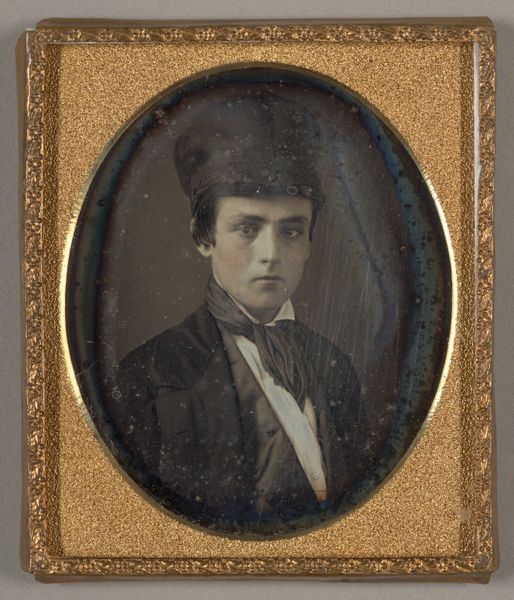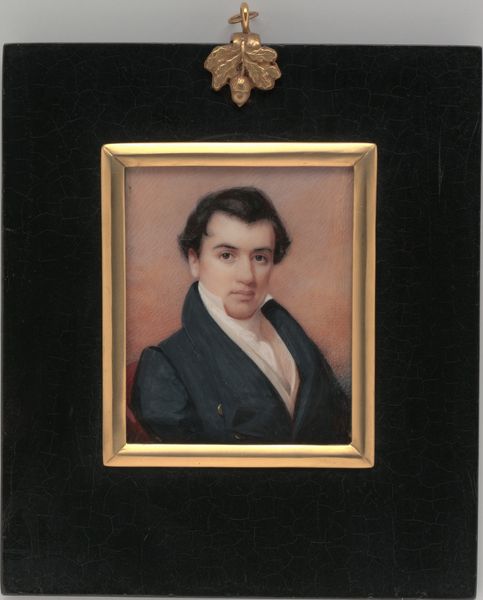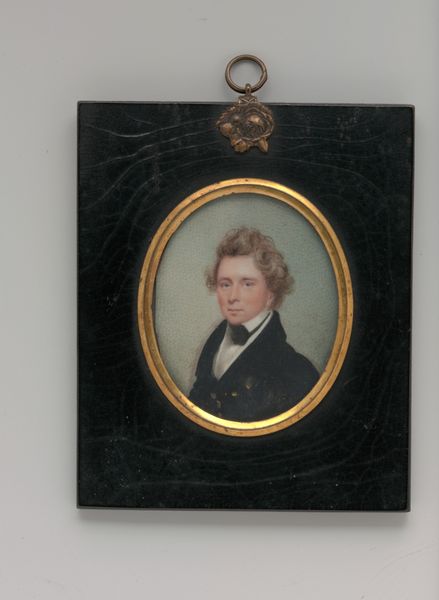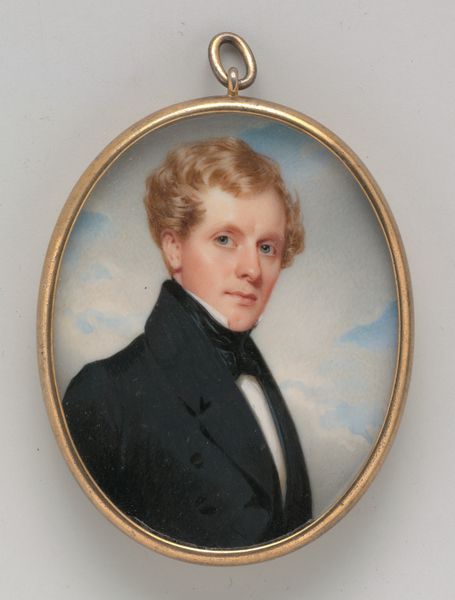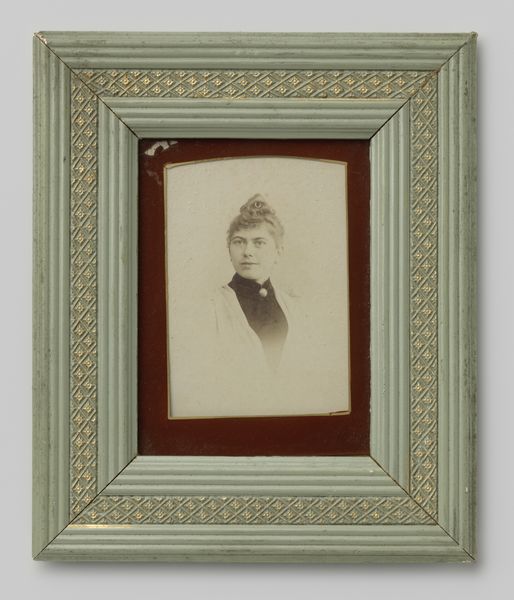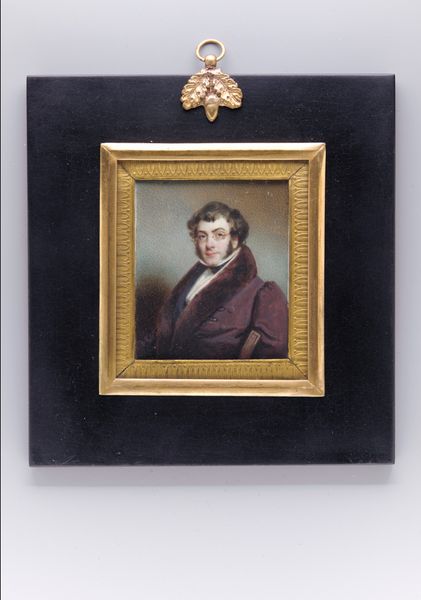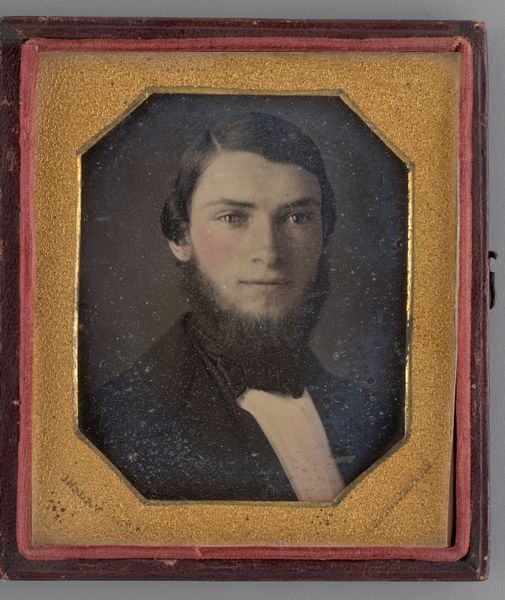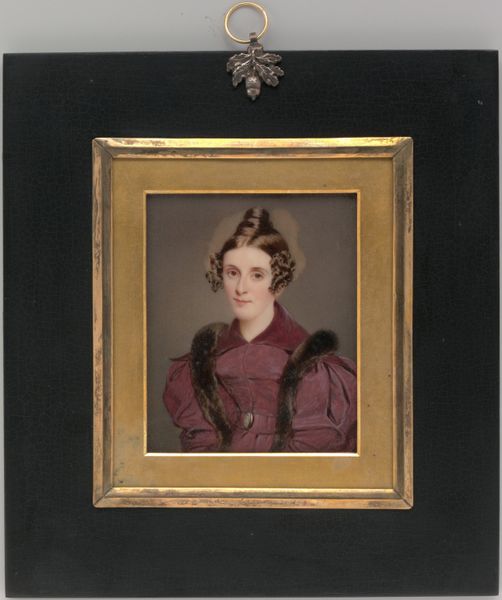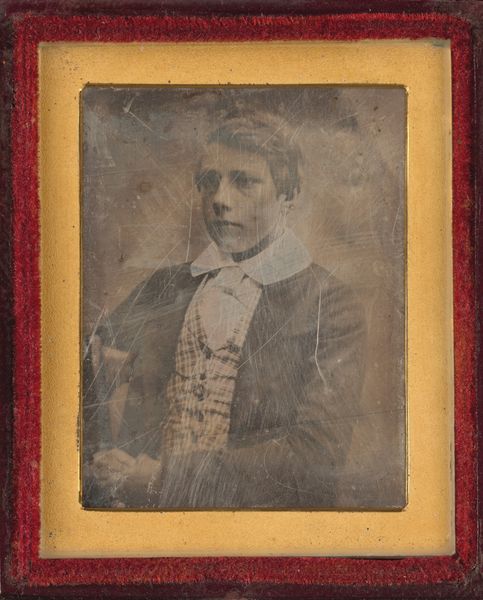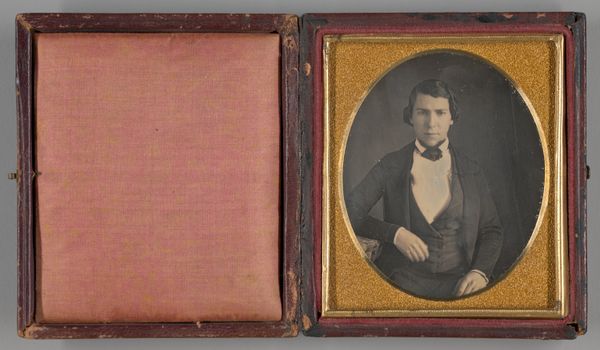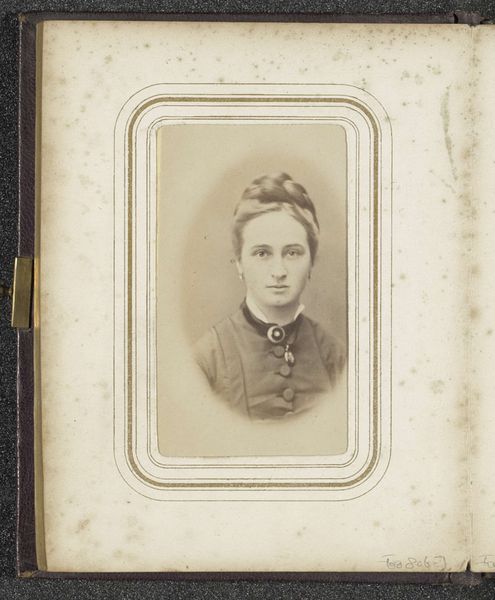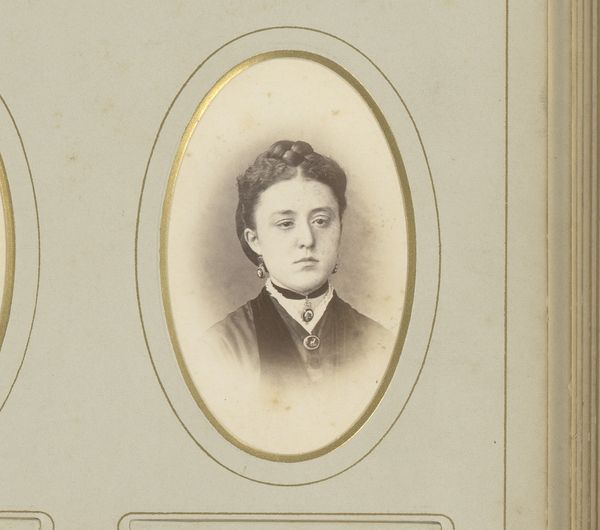
drawing, watercolor
#
portrait
#
drawing
#
watercolor
#
romanticism
#
watercolor
Dimensions: 3 1/4 x 2 5/8 in. (8.4 x 6.8 cm)
Copyright: Public Domain
Curator: Here we have Henry Inman's "John Inman," created sometime between 1822 and 1828. It's a delicate watercolor drawing. Editor: My first impression is how self-contained the figure is. The dark jacket and oval composition create a sense of enclosure and introversion. Curator: Absolutely. It's interesting to consider the materiality of a portrait miniature like this. Watercolors were popular for their portability and relatively low cost, which democratized portraiture. Who could afford it and why? This miniaturization reflects evolving class structures and consumption habits during that period. Editor: From a historical perspective, miniatures served as intensely personal objects. Often commissioned for loved ones or kept as mementos, they functioned within specific social circles. This piece, showcased at The Met, acquires an added layer of meaning as it transitions into public consumption and interpretation. How do institutions transform the reception of art? Curator: The layering and delicate rendering of the face suggest skilled craftsmanship, even given the medium's inherent accessibility. Inman's labor becomes a valuable attribute within the broader economy of art production. He transformed affordable material into enduring status. Editor: And there's something romantic in that era, from social gatherings to military endeavors that contribute towards building an interesting picture of cultural development through pictorial representation and consumption! How did society legitimize itself via artistic avenues such as the art miniature? Curator: I’d say this offers an intimate yet constructed view of its time. A small watercolor says so much about artistic enterprise! Editor: This interplay of material and context really unlocks our appreciation for Inman's world.
Comments
No comments
Be the first to comment and join the conversation on the ultimate creative platform.

